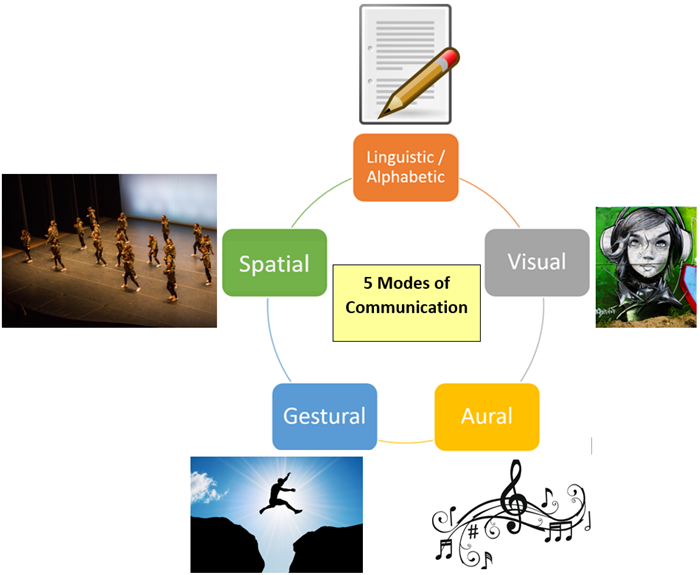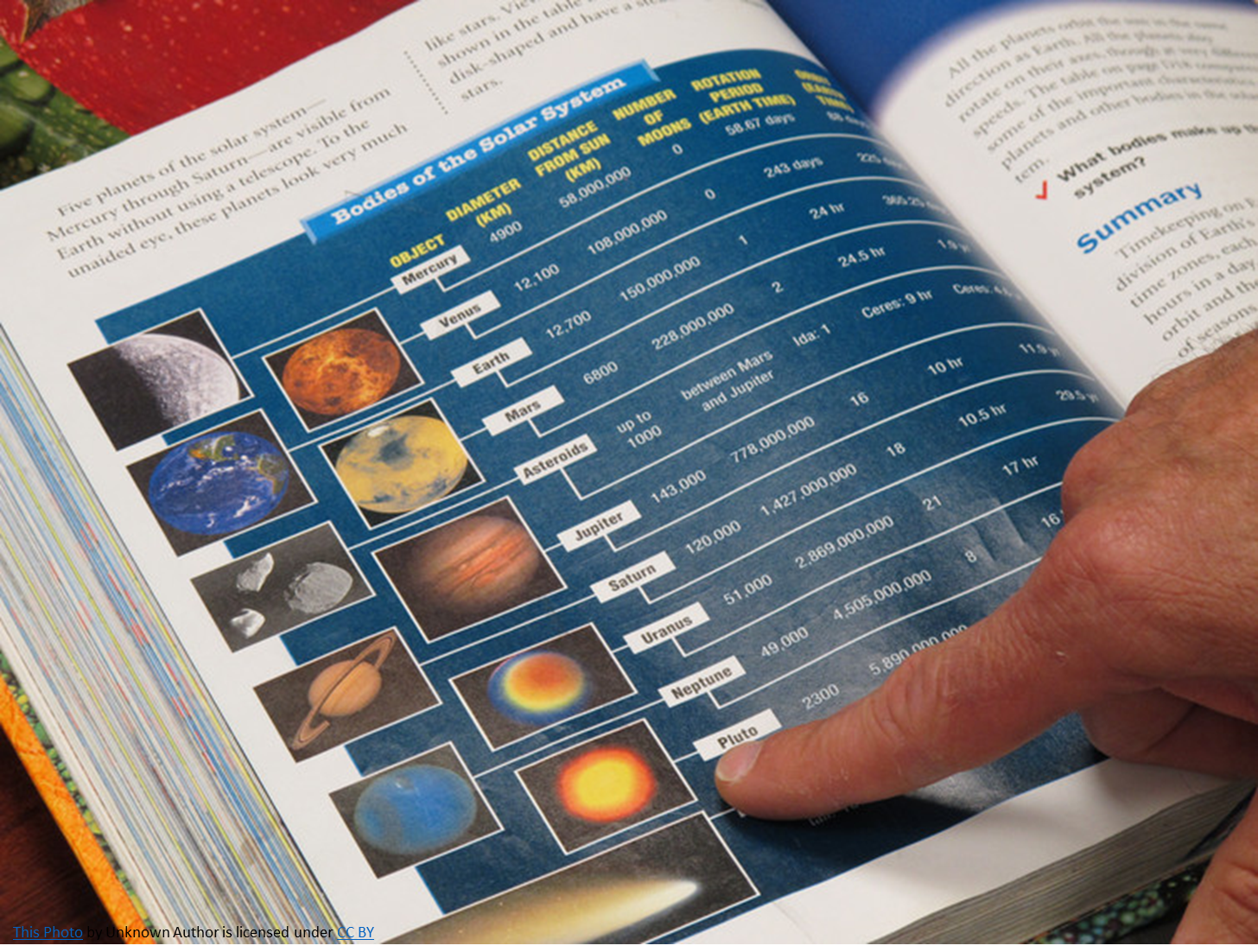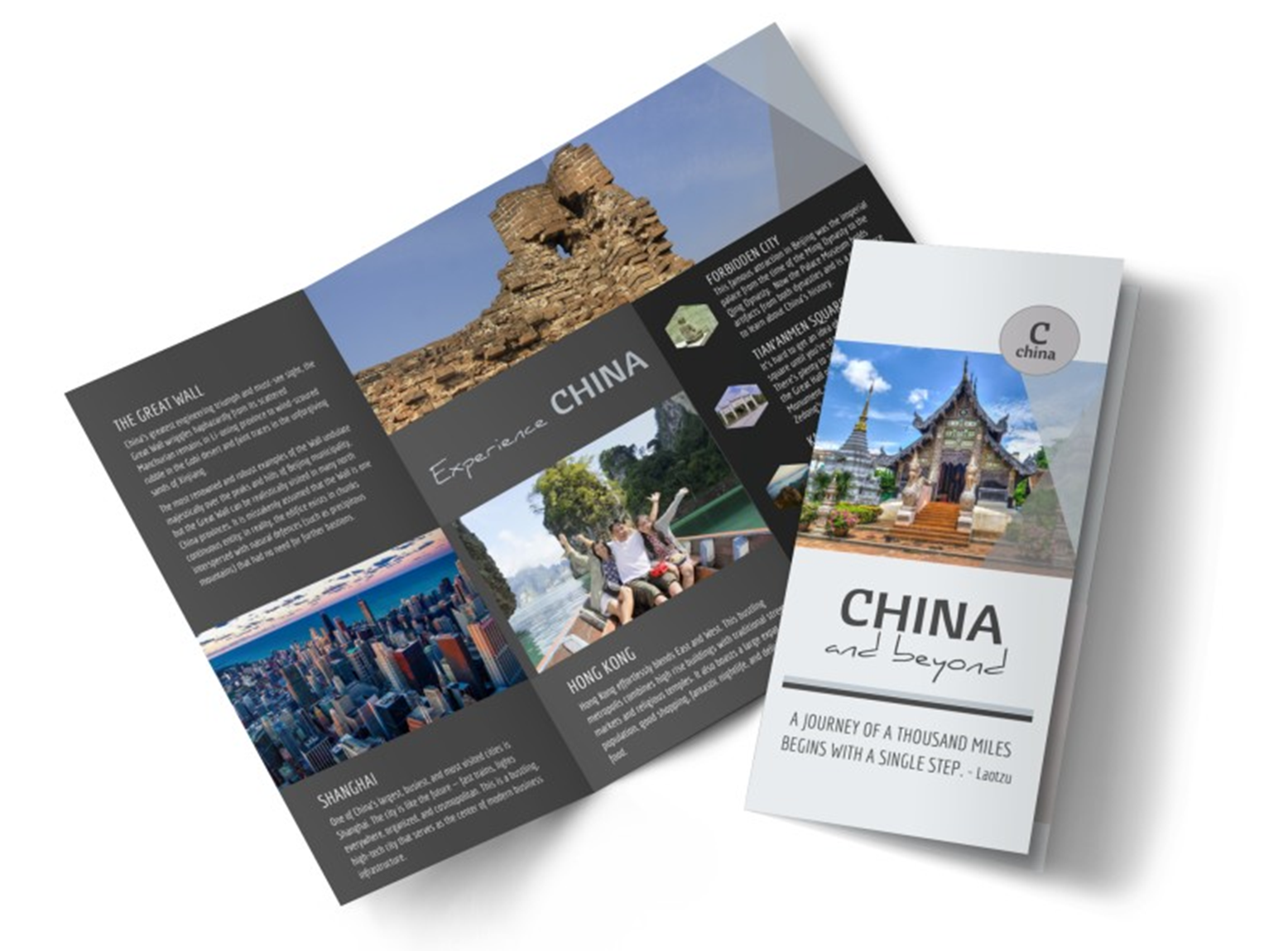Ann Fillmore
As writers, we make choices. In every situation, we must decide how to best communicate meaning to our intended audiences. It is a process of deliberation that involves calculated choices, strategies, and moves. And, nowadays, writing isn’t just putting words onto paper anymore.
“Multi-modal” assignments have become common in higher education, and it is likely that you will be asked to create multi-modal texts during your academic career. In the field of writing/composition, “modality” is a rhetorical decision that you need to consider as you explore how to best achieve your intended purpose(s).
A multi-modal text employs more than one “mode” to communicate meaning beyond the written word alone. According to the New London Group, these are the five modes:
Why would writers want to communicate in a modality other than alphabetic text? We’ve all heard the saying that “a picture is worth 1000 words.” In certain situations, a visual has the potential to convey an idea more effectively and more quickly than written text. Images can help readers to better engage with the topic and experience a moment in a way that could be more difficult to accomplish with words alone.

THE FIVE MODES EXPLAINED
Modality is an important rhetorical decision that writers need to consider. Here’s a more detailed look into each mode of communication. Modes can be used individually and in combination with others to create multi-modal texts.
-
Linguistic/Alphabetic Mode: includes written and spoken words, word choice, vocabulary, grammar, structure, and organization of sentences and paragraphs
Writers use words to communicate. This mode is the most widely used, is a form that most people are familiar with, and can be delivered through print and audio.

Shopping lists, emails, text messages, academic essays, and the automated voice you hear as you’re on hold with customer service use the linguistic/alphabetic mode since they rely on words to create meaning.
-
Visual Mode: includes images, video, color, visual layout, design, font, size, formatting, symbols, visual data (charts, graphs), animation (like gifs)
The visual mode helps writers communicate meaning in a way that can be seen by the audience. Sometimes people must see to believe, and visuals can be helpful and even persuasive. For example, if you want to showcase how climate change has devastated the arctic ecosystem, you might include a video that shows real-world footage, like this one by National Geographic. This video is considered a multi-modal text since words, visuals, and audio are used together for a stronger effect.
The visual mode also includes elements of design and allows writers a more creative way to present text on a page/screen. For example, the textbook in the photo below makes use of labels, headings, color, and other visual features to help the reader more easily understand the information. This textbook is considered multi-modal since it combines multiple modes of communication.

-
Aural Mode: includes spoken words, sound, music, volume, rhythm, speed of delivery, pitch, tone, voice
Sound catches people’s attention, and writers use the aural mode to bring their words to life. For example, have you ever listened to a game on the radio? Listen to the way the sportscasters help the audience to experience the game through sound. This sportscast is considered a multi-modal text since the authors combine words (linguistic/alphabetic mode) with sound (aural mode).
Another example of the aural mode is an audio book. Listen to the following excerpt from The Carriage, by Jena Baxter. Spoken words can add depth and emotion to a story. As you listen, pay attention to the volume, rhythm, pitch, speed, and tone of the narrator’s voice. Multi-modality can enhance the experience of “reading” a text.
-
Gestural Mode: includes movement, speed, expression, body language, facial expression, physical proximity, interactions between people
The gestural mode of communication allows writers to communicate meaning through movement. Traditionally, this mode was used primarily in face-to-face interaction; however, modern technology allows writers to show movement virtually in their work, through video. The gestural mode is often used in combination with other modes, such as linguistic/alphabetic (written/spoken), spatial (physical arrangement), and aural (sound) to provide an enhanced sensory experience for the audience.
For example, sign languages use the gestural mode since position of the sign and movement are significant factors in generating and distinguishing meaning. In this video, look at how the speakers use movements of the hands, head, face, and body, along with position and speed, to communicate meaning to the audience. Sign languages are considered multi-modal communication since they combine linguistic/alphabetic text with movement.
-
Spatial Mode: includes physical arrangement―spacing, position, organization, proximity, direction, and distance of elements in a text
 Writers use the spatial mode of communication in the physical layout and organization of a text. For example, this tri-fold pamphlet, printed and folded on paper, presents information spatially on six panels. Physical arrangement impacts the way the audience can interact with your work.
Writers use the spatial mode of communication in the physical layout and organization of a text. For example, this tri-fold pamphlet, printed and folded on paper, presents information spatially on six panels. Physical arrangement impacts the way the audience can interact with your work.
Websites also rely heavily on the spatial mode to communicate meaning. Writers make strategic rhetorical decisions about how to arrange digital information in a user-friendly way within a mobile “space.” Features like menus, headers, physical layout, and navigation tools (such as links) help the audience to interact with the site spatially. Websites are considered multi-modal texts since multiple modes are used in combination to communicate with the audience.

Take a few minutes to browse the SLCC website. As you explore, pay attention to how the authors arrange the information within the digital space. What does this communicate to the reader? How does the spatial arrangement enhance or hinder the user experience? These are important rhetorical decisions to consider as you work.
MULTI-MODAL CONSIDERATIONS
Now that you have a further understanding of the five modes of communication and how they work individually and in combination, how can you apply them into your writing?
Start by researching the rhetorical situation. It is essential that you have a firm understanding of the purpose, audience, and context surrounding the writing task. Understanding the rhetorical situation will help you to make decisions as to which mode or combination of modes might best help you to connect with your intended audience.
As the writer, you’ll need to determine which modes could add value to your work. Be careful not to add modes just because you think you should. Each mode you use should add meaning to the text. Consider the opportunities, challenges, and constraints of any writing task and assess and revise your work to meet the needs of the audience.
Some questions you may want to consider:
- Does the rhetorical situation call for a certain mode? Or, do you have some creative freedom in how you present your ideas or make your argument?
- How does a certain mode affect the way your audience will receive or experience the message? What are the advantages and disadvantages of using a certain mode for this particular writing task?
- Could you use a combination of modes? Would a multi-modal approach enhance your message or help you to better get your point(s) across?
- Do you possess the technological skills necessary to effectively use a specific mode? Will you need to learn additional skills in order to create your work? If so, how can you best learn these skills in the given time frame?
In conclusion, modality affects how the audience will interact with and generate meaning from your work. Writing in the five modes can help you to think “outside the box” as you make rhetorical decisions about the kinds of communication that you could use as you venture beyond the printed word.
Works Cited
Lutkewitte, Claire, editor. Multimodal Composition: A Critical Sourcebook. Bedford/St. Martin’s, 2014.
All photos labeled for reuse unless otherwise noted.
